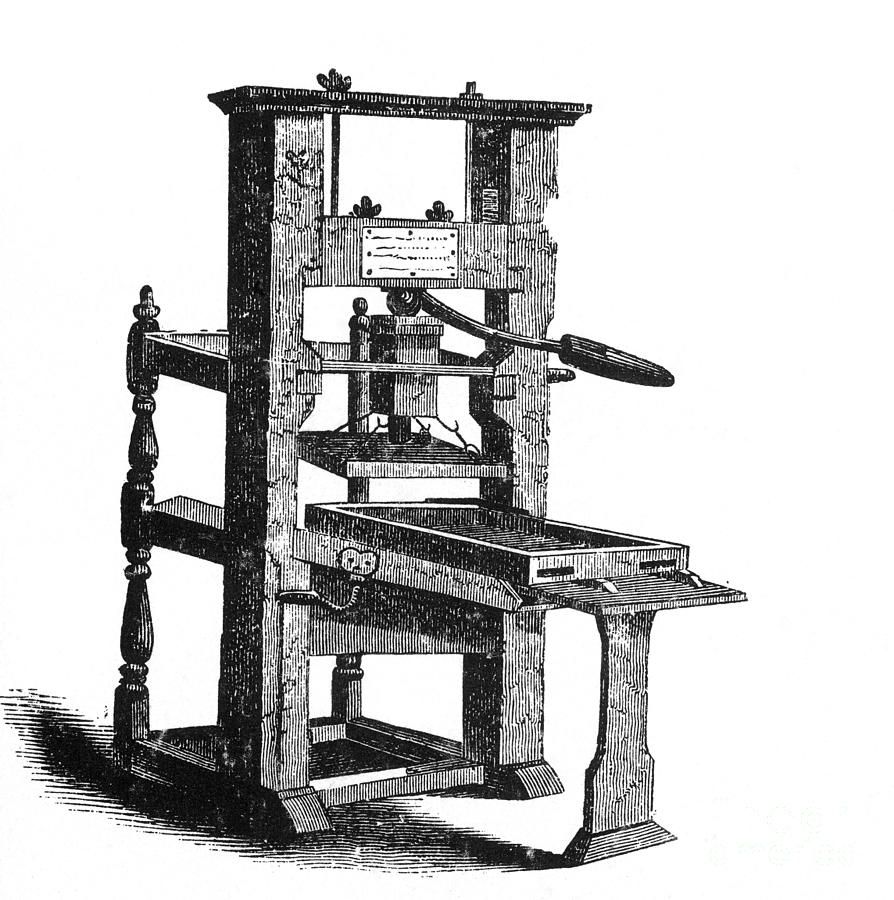Printing Made Easy
The invention of the printing press changed the course of history and writing. The printing presses invention is credited to a man named Johannes Gutenberg however, the first instances were instances of printed texts were discovered in China. Being able to print instead of hand write greatly impacted the revolution of the renaissance, because it allowed for the spread of mass information whatever it may be. The Gutenberg Bible is one of the most well-known works linked to the invention of his press. In his time he created around 180 copies of this Bible. Contrasted with the previous method of writing copies of the Bible which would normally take over a year to handwrite, the Gutenberg was a much more effective and to write a bible. As well the printing press restricted the amount of human error as each copy would relatively be the same, allowing for consistent copies of the text.

The Accessorization of The Letter
Gutenberg was not only responsible for the printing press but also for the first typeface. This typeface was known as blackletter, while it wasn’t necessarily the best typeface paved the way for new types to be created and influenced the way that letters are decorated today. Typefaces are created for many different uses, each unique type conveys different emotions and choosing a typeface is an important process in design, writing, and any other sort of writing activity. Certain fonts that came soon after blackletter such as Bembo and Adobe Jenson are more iconic and we can see their impacts on modern typefaces. The reason that typefaces were created when the printing press was because for a typeface to work it always has to be the same, and handwriting has many minor flaws that disrupt the flow of typeface.

Personal Thoughts
While the use of the Gutenberg press is no longer used in today’s culture, its impact can still be widely seen. The use of printers is a daily occurrence and while technology has changed the ideas of printing have stayed the same. The same can be said about typeface, and that original versions of certain typestyles have varied a little but the original idea can still be seen. It is important to be able to understand how modern ideas and techniques have evolved from the past and give us a new appreciation for history. I think that with all the modern technology that is so easy to access we sometimes forget what used to be a struggle and certain inventions become less valuable to us. Even having a book back 600 years ago was a luxury, understanding this and doing research on these topics has given me insight and gratitude for what I can create and learn about because of these inventions.

Work Cited.
A Brief History of Typography & Typefaces. (2014, July 3). Retrieved from https://www.ashworthcreative.com/blog/2014/07/brief-typography-typefaces/.
Bangera, J. (2017, November 29). What Do All The Printer Model Letters Mean? Retrieved from https://blog.inkjetwholesale.com.au/printer-education/printer-model-letters-mean/. (Image 3)
Blackletter. (2020, May 29). Retrieved from https://paperbackdesign.com/typefaces/blackletter/. (Image 2)
Green, C. (2018, August 21). The Difference Between Font and Typeface. Retrieved from https://hobancards.com/blogs/thoughts-and-curiosities/difference-between-font-and-typeface.
History.com Editors. (2018, May 07). Printing Press. Retrieved from https://www.history.com/topics/inventions/printing-press.
Shutt, B. (2014, August 18). This Week in Tech History: The Gutenberg Bible and Printing Press. Retrieved from http://vrworld.com/2014/08/17/week-history-gutenbergs-bible/. (Image 1)
K. (2013, June 8). Why We Should Thank Johannes Gutenberg. Retrieved from https://thelibrary.org/blogs/article.cfm?aid=2327.
